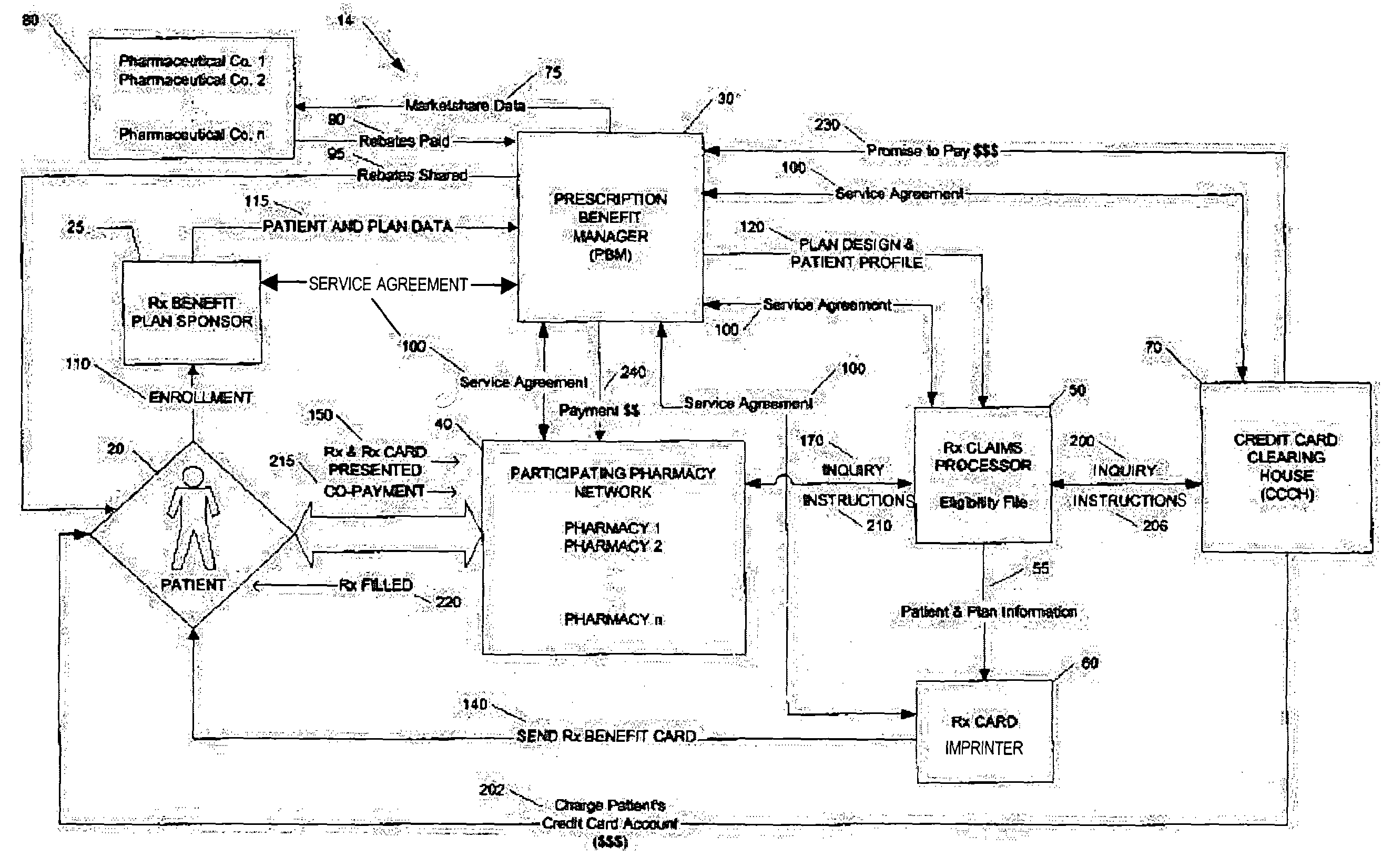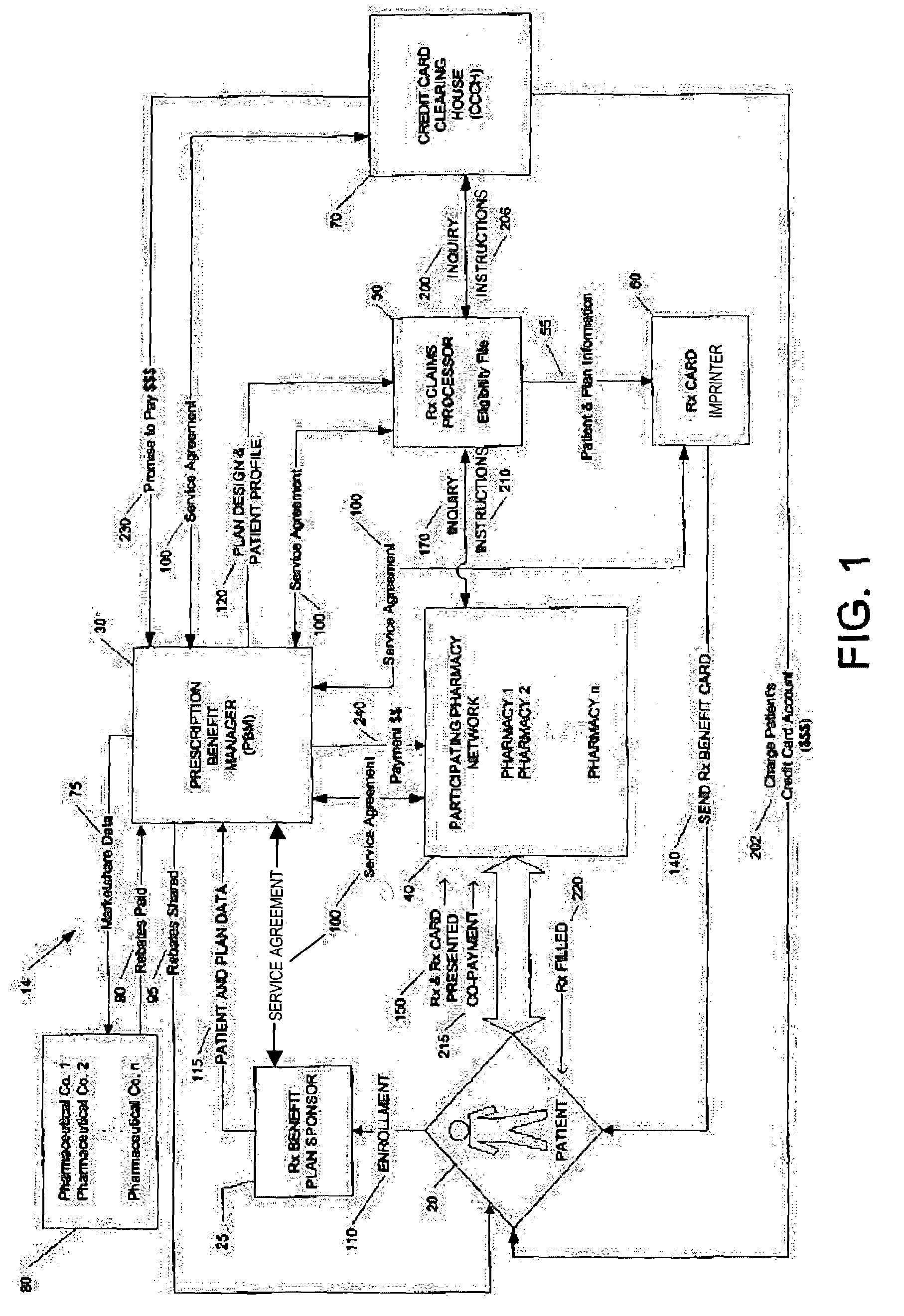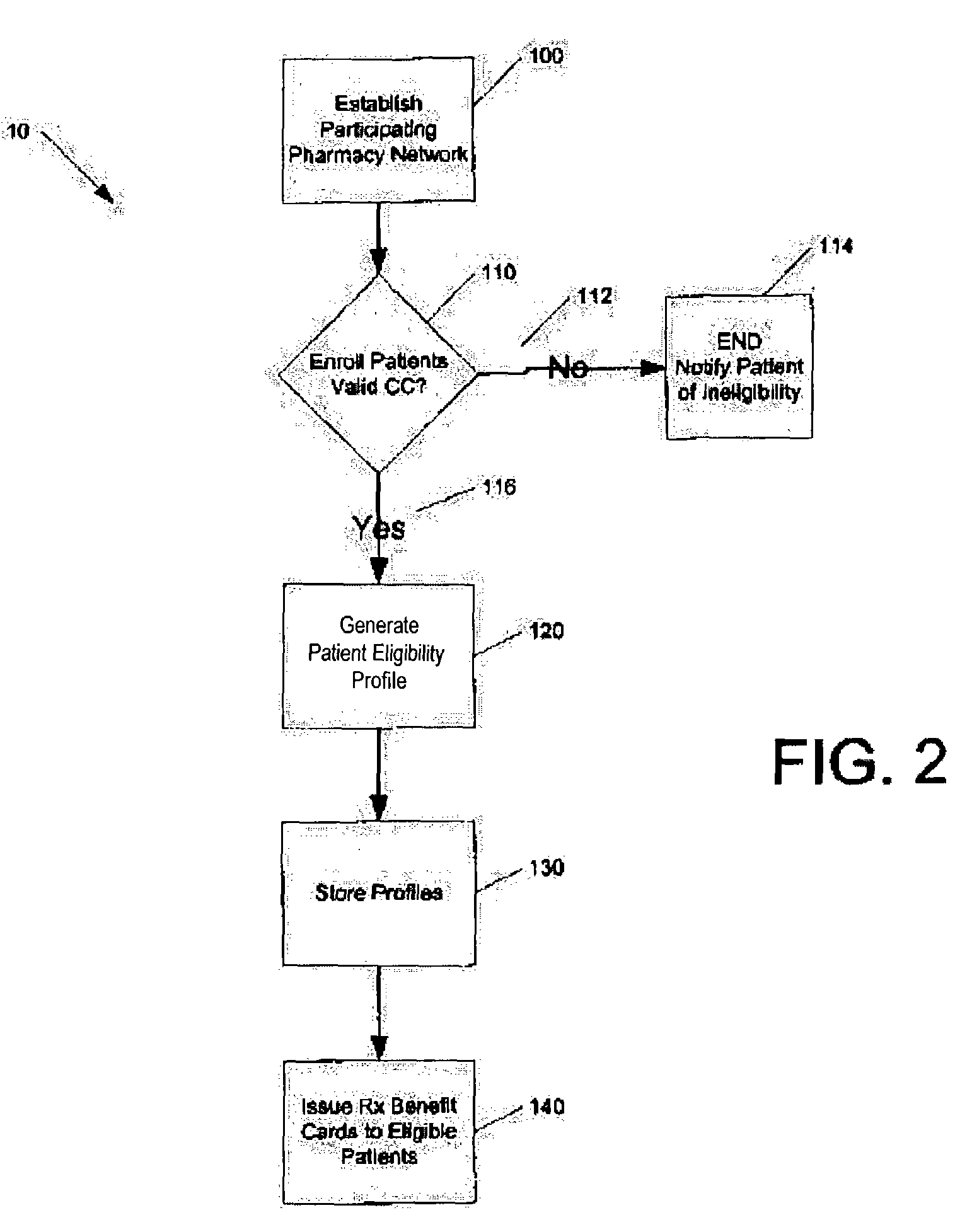Method for conducting prescription drug co-payment plans
- Summary
- Abstract
- Description
- Claims
- Application Information
AI Technical Summary
Benefits of technology
Problems solved by technology
Method used
Image
Examples
Embodiment Construction
)
[0016]Referring first to FIG. 1, the primary parties involved in the prescription co-payment plan 14 (the “Plan”) may include a patient / subscriber 20, a prescription benefits plan sponsor 25, a prescription benefits manager (“PBM”) 30, a participating pharmacy network 40, a prescription claims processor 50, a prescription card imprinter 60, a credit card clearing house 70, and pharmaceutical companies, shown generally at 80. It should be noted that the terms “patient” and “subscriber” may be used interchangeably herein. A prescription benefits plan sponsor 25 first designs the Plan 14. The Plan 14 design essentially defines what medical products and prescription medications are covered, what portion of the cost the patient is responsible for, the amount of co-payment to be tendered by the patient at the time of dispensing, and what portion of the cost of the products and prescriptions the pharmacy is responsible for. The plan design also preferably includes a formulary of preferred...
PUM
 Login to View More
Login to View More Abstract
Description
Claims
Application Information
 Login to View More
Login to View More - R&D Engineer
- R&D Manager
- IP Professional
- Industry Leading Data Capabilities
- Powerful AI technology
- Patent DNA Extraction
Browse by: Latest US Patents, China's latest patents, Technical Efficacy Thesaurus, Application Domain, Technology Topic, Popular Technical Reports.
© 2024 PatSnap. All rights reserved.Legal|Privacy policy|Modern Slavery Act Transparency Statement|Sitemap|About US| Contact US: help@patsnap.com










